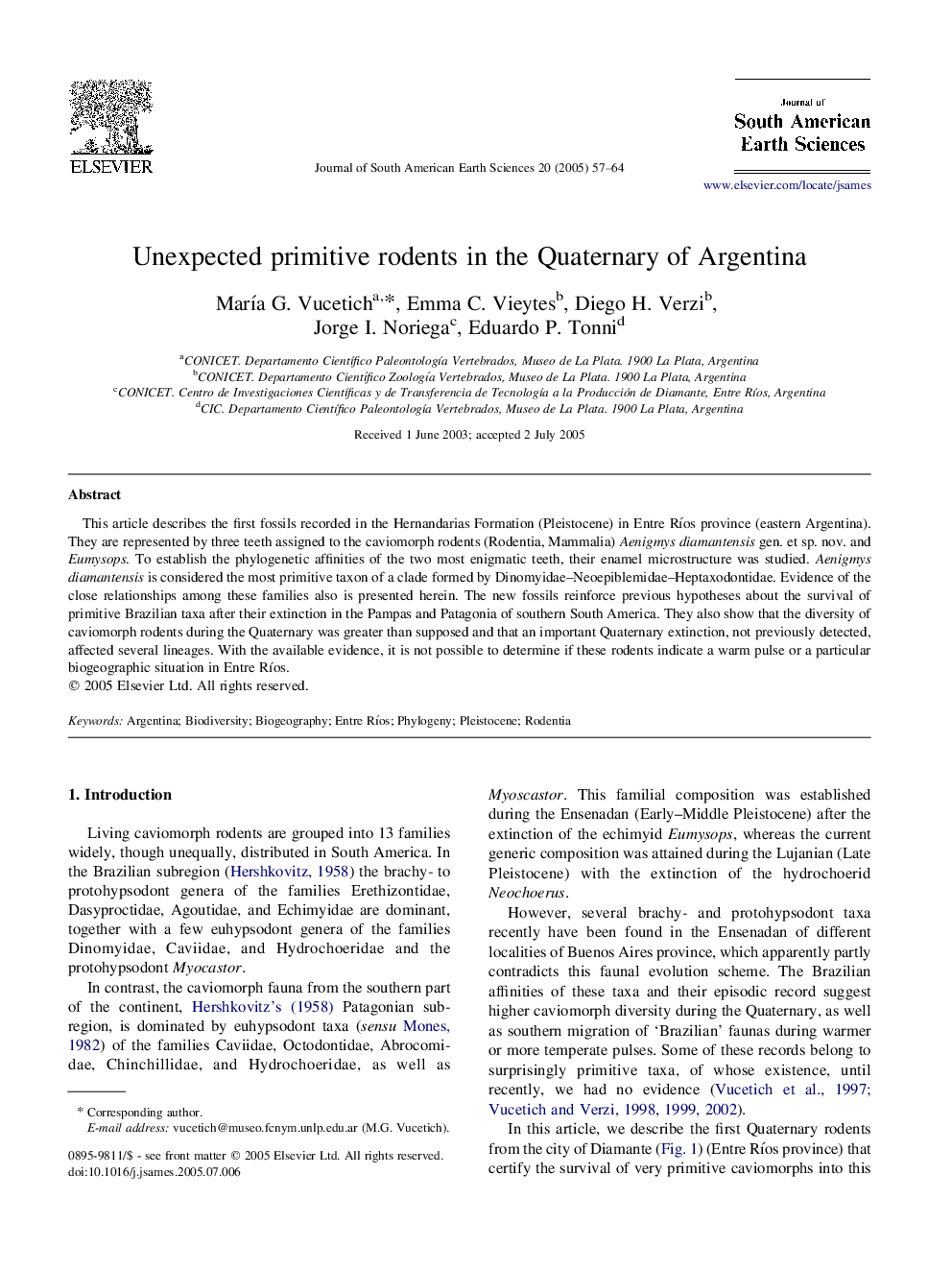| Article ID | Journal | Published Year | Pages | File Type |
|---|---|---|---|---|
| 9524375 | Journal of South American Earth Sciences | 2005 | 8 Pages |
Abstract
This article describes the first fossils recorded in the Hernandarias Formation (Pleistocene) in Entre RÃos province (eastern Argentina). They are represented by three teeth assigned to the caviomorph rodents (Rodentia, Mammalia) Aenigmys diamantensis gen. et sp. nov. and Eumysops. To establish the phylogenetic affinities of the two most enigmatic teeth, their enamel microstructure was studied. Aenigmys diamantensis is considered the most primitive taxon of a clade formed by Dinomyidae-Neoepiblemidae-Heptaxodontidae. Evidence of the close relationships among these families also is presented herein. The new fossils reinforce previous hypotheses about the survival of primitive Brazilian taxa after their extinction in the Pampas and Patagonia of southern South America. They also show that the diversity of caviomorph rodents during the Quaternary was greater than supposed and that an important Quaternary extinction, not previously detected, affected several lineages. With the available evidence, it is not possible to determine if these rodents indicate a warm pulse or a particular biogeographic situation in Entre RÃos.
Related Topics
Physical Sciences and Engineering
Earth and Planetary Sciences
Earth and Planetary Sciences (General)
Authors
MarÃa G. Vucetich, Emma C. Vieytes, Diego H. Verzi, Jorge I. Noriega, Eduardo P. Tonni,
